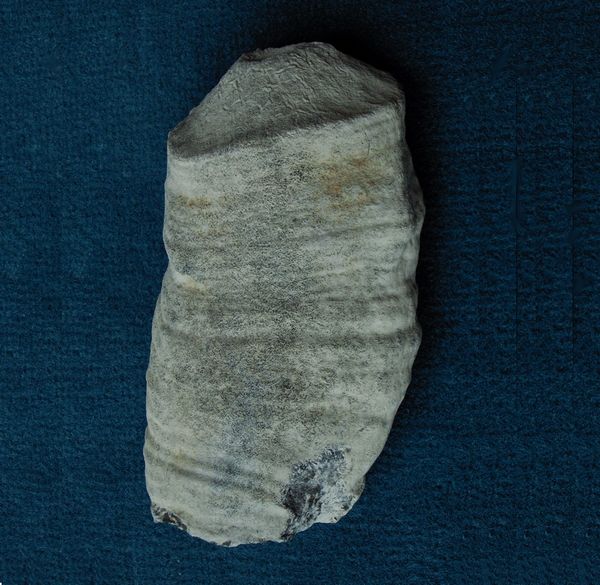
Pseudoscytalia fastigata
Lee 1839
Pseudoscytalia fastigata is a cylindrical sponge with a cone-shaped top and a central tube-like paragaster. The surface shows concentric wrinkles in the cylindrical section and anastomosing furrows on the top.
Pseudoscytalia differs from Scytalia in the size and habit of the rhizoclones: Those of Scytalia turbinata are larger, more elongate, and less branched. Also, Pseudoscytalia has a dense cortex formed by closer arrangement of rhizoclones.
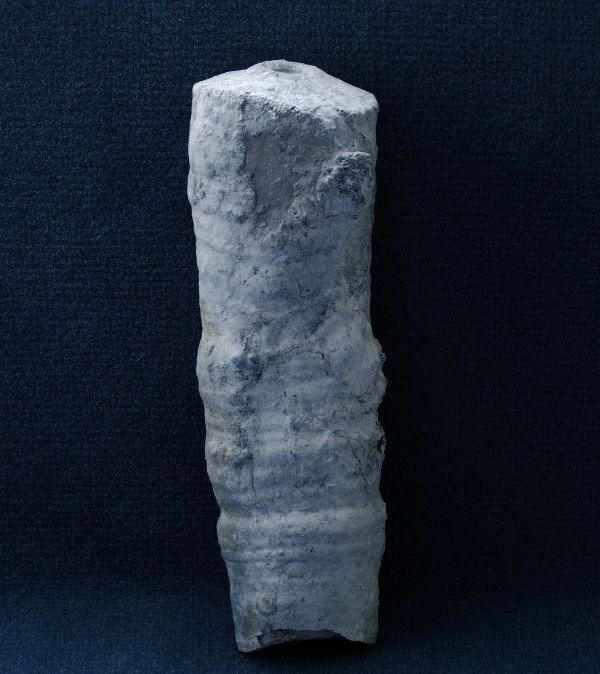
Pseudoscytalia fastigata
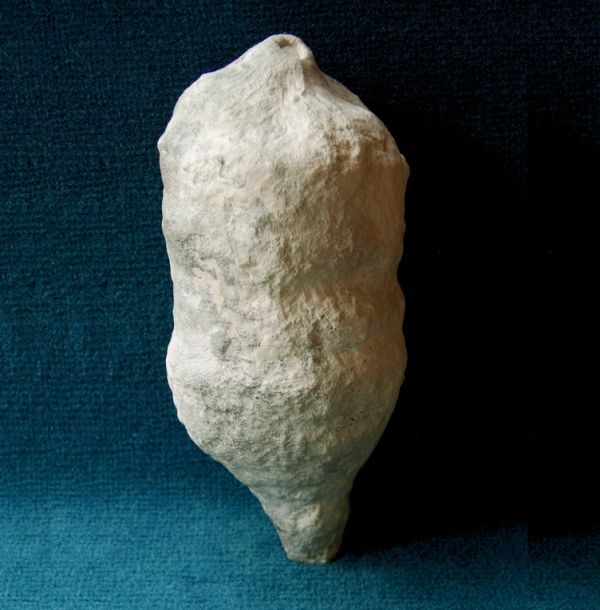
Pseudoscytalia terebrata
Phillips 1835
Pseudoscytalia terebrata occurs in cylindrical to top-shaped habits.
The distinction between P.fastigata and P.terebrata is based only on size and aspect ratio, with Pseudoscytalia fastigata forming more slender, cylindrical habits which do not reach the size of larger Pseudoscytalia terebrata individuals. It also appears that Pseudoscytalia terebrata shows more clearly a radially arranged skeletal fibre related to aporhysal canals.
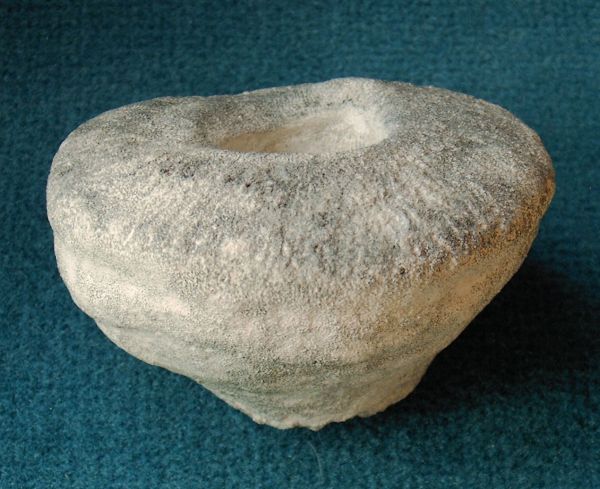
A short example of ? Pseudoscytalia terebrata, perhaps an immature individual.
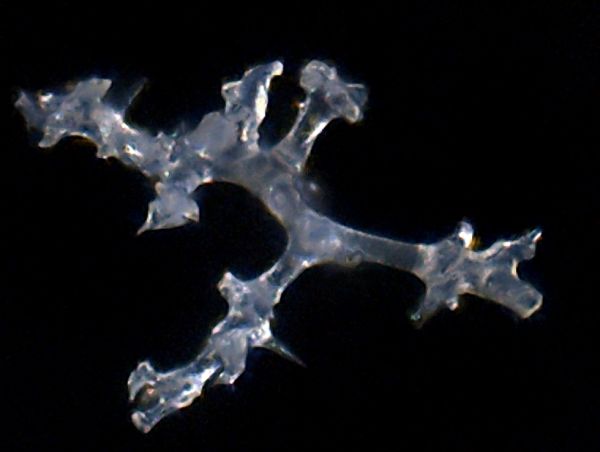
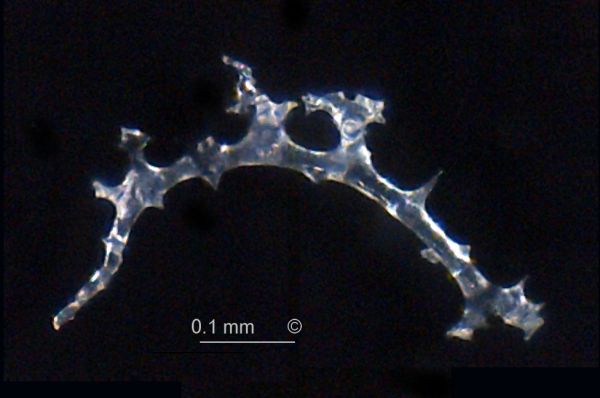
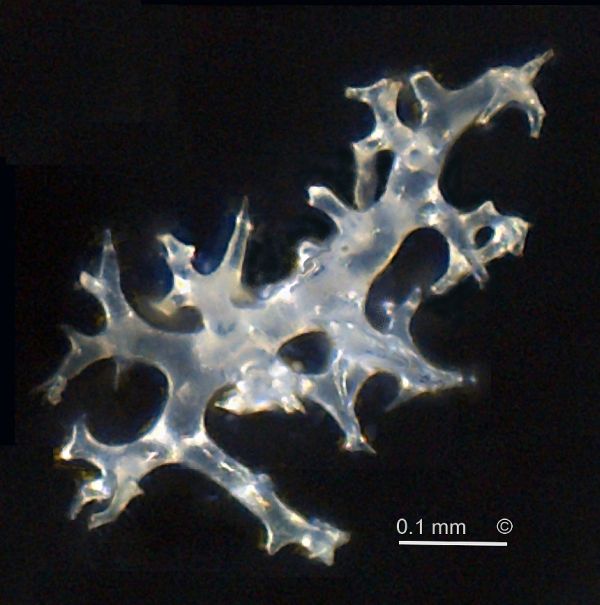
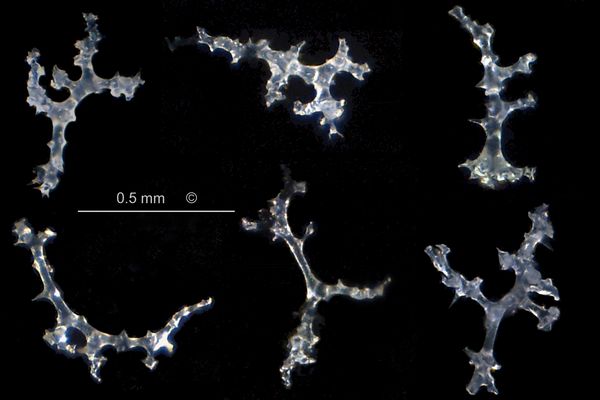
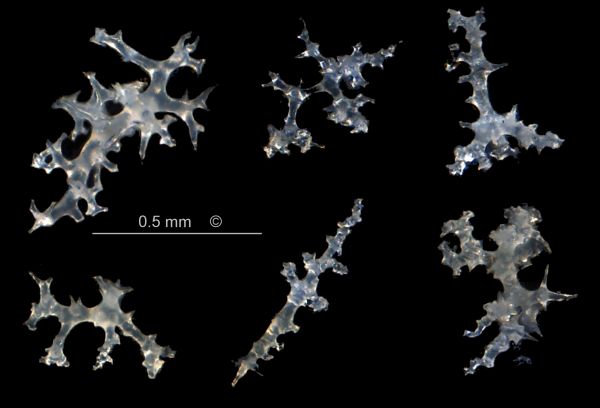
The three images and two plates show a selection of typical rhizoclone scleres of Pseudoscytalia terebrata. The skeletal elements are comparatively small. Typical rhizoclones may be straight, arched or multiply branching and have conspicuous conical thorns.